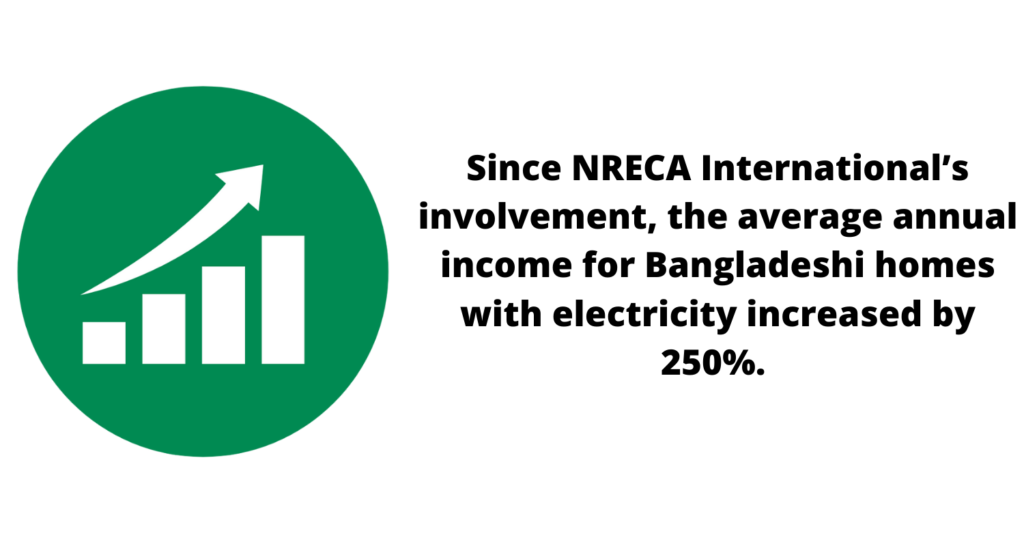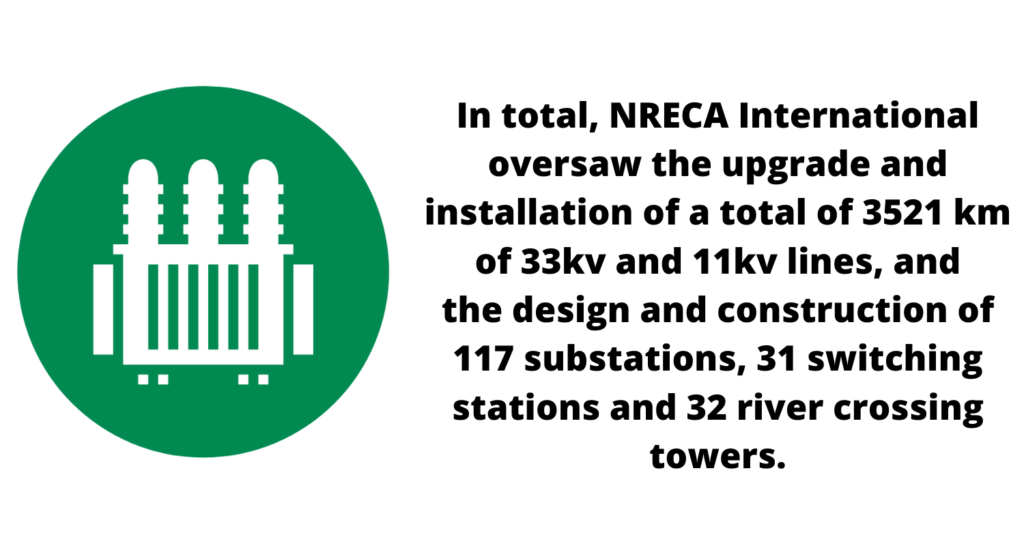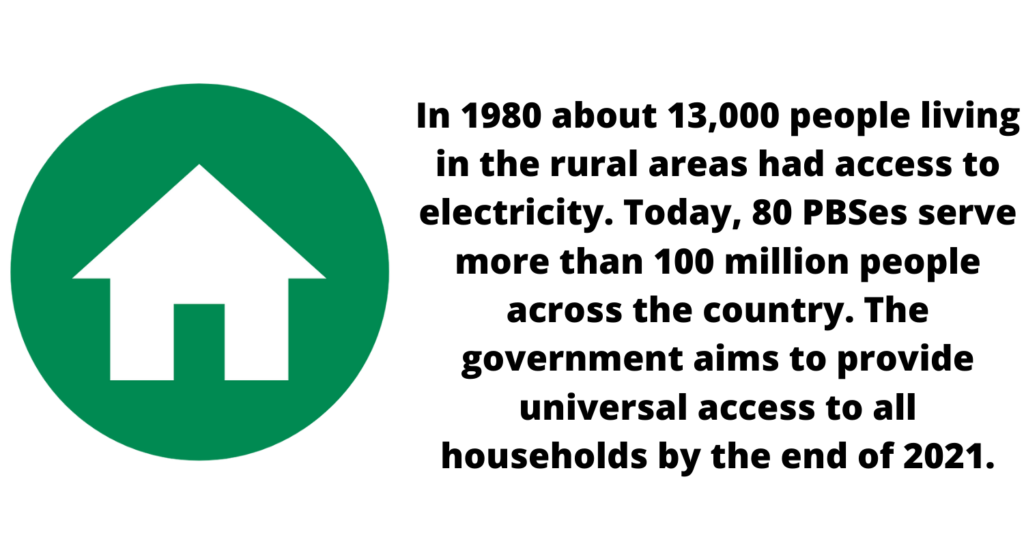The Situation
Electricity in Bangladesh
The Bangladesh Rural Electrication Board (BREB) and its associated rural electric cooperative utilities (Palli Bidyut Samities, or PBSes) are charged with delivering electricity to rural Bangladesh. Since beginning in 1980, the system has expanded from 13 to 80 PBSes and serves more than 100 million people across the country. As the government continues to seek universal access, the PBSes will serve eectively 100% of the rural population by 2021. This emphasis on system expansion for access has come at a price, however, and the next challenge will be to increase system capability for supplying reliable power to consumers who have grown used to enjoying the benets of electricity.
The Challenge
To help BREB reach the goal of providing universal access by 2021, there was a critical need to expand capacity in the rural distribution network in the eastern part of Bangladesh. To do this, the Government and the World Bank embarked on a project to address the investment gap in the medium-voltage rural primary distribution network, construct and upgrade power lines, and construct substations and other facilities to complement the rapid expansion of the lower-voltage network that occurred over the last decade.
The Solution
To successfully implement this large and complex eort, NRECA International elded a team consisting of 62 civil engineers, substation and transmission specialists, inspectors, supervisors, and contractors. Each were required to follow rigorous standards, specifications as well as requirements of good practice. The NRECA International team began with a design review and updated the project program, cost estimate and cash flow forecast, and supported the BREB’s tendering for supply-and-install contracts and line construction contracts available only to local contractors. NRECA International also provided expert oversight of factory acceptance testing of equipment which included power transformers, instrument transformers, and auxiliary transformers, switches, relay panels and insulated cables.
Various mechanisms were implemented to ensure that the entire team would be trained and followed uniform and high-quality standards that were set by the NRECA International team. This included creating media platforms for inspectors to upload pictures of construction activity in real time. Inspector travel, locations and leased vehicles were tracked via GPS. A system of hold points and schedules were also implemented to ensure that certain activities could only occur with inspectors present.
Upon completion of the construction, NRECA International oversaw the final testing of all equipment, to ensure successful commissioning of all facilities.
By the Numbers


